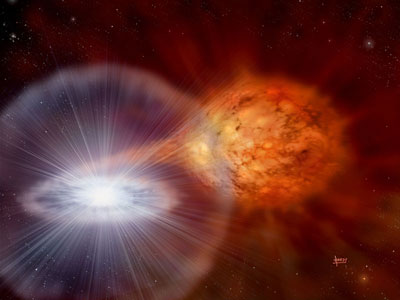
|
White Dwarf
A white dwarf (left) accreting gas from a nearby red giant (right); the white dwarf grows at its partner’s expense.
|

|
Planetary Nebula NGC2440
An
immense cloud of ejected stellar gas surrounds a tiny central dot. That
dot is a white dwarf whose surface temperature is 360,000 oF, the
highest ever measured.
|

|
Cat’s Eye Nebula
3000 light-years away.
The white dwarf is the central bright dot.
|
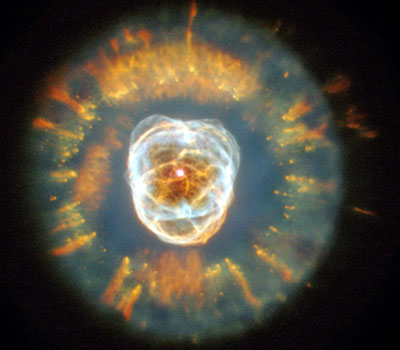
|
Eskimo Nebula
5000 light-years away and 8 light-years across.
|

|
Pulsar
Some neutron stars are in a special class called pulsars. Pulsars sweep
radio waves across the heavens, much like lighthouse beacons sweep
across our night sky. This one is at the center of the Crab Nebula and spins 33 times per second
|
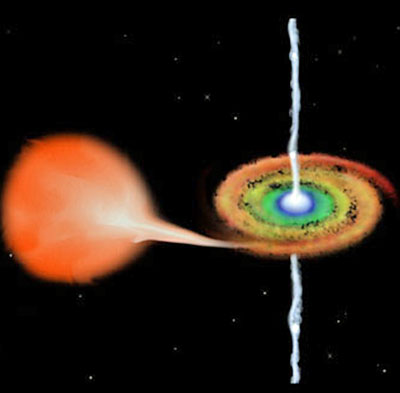
|
|
Accretion Disk and Jet
An artist’s sketch illustrating how a black hole can consume a companion star.
|
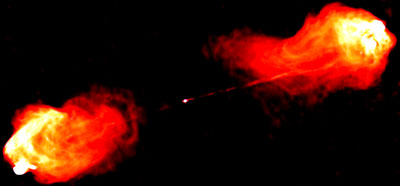
|
Cygnus A
The
central bright spot is the accretion disk around the black hole. On
either side are two enormous jets, streams of particles moving at an
estimated 1/3 the speed of light. The jets blast through gas clouds
like immense flame-throwers. From end to end, the mayhem spans 500,000
light-years, five times the size of our galaxy. This is one of the
largest contiguous objects ever seen in our universe, and it originates
from something smaller than a trillionth of a trillionth of the size of
a single atom.
|
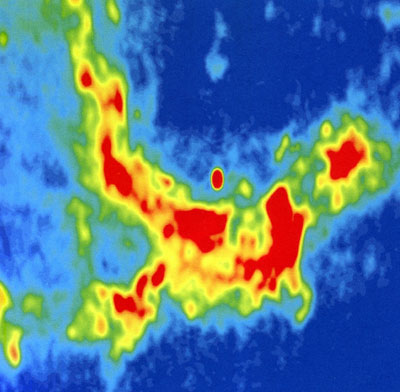
|
Sagittarius A*
is
the supermassive black hole at the center of our own galaxy, the Milky
Way. This is a radio telescope image of the central two
light-years of our galaxy. The central oval is radiation emitted by
material swirling around Sag A*, at its center.
|